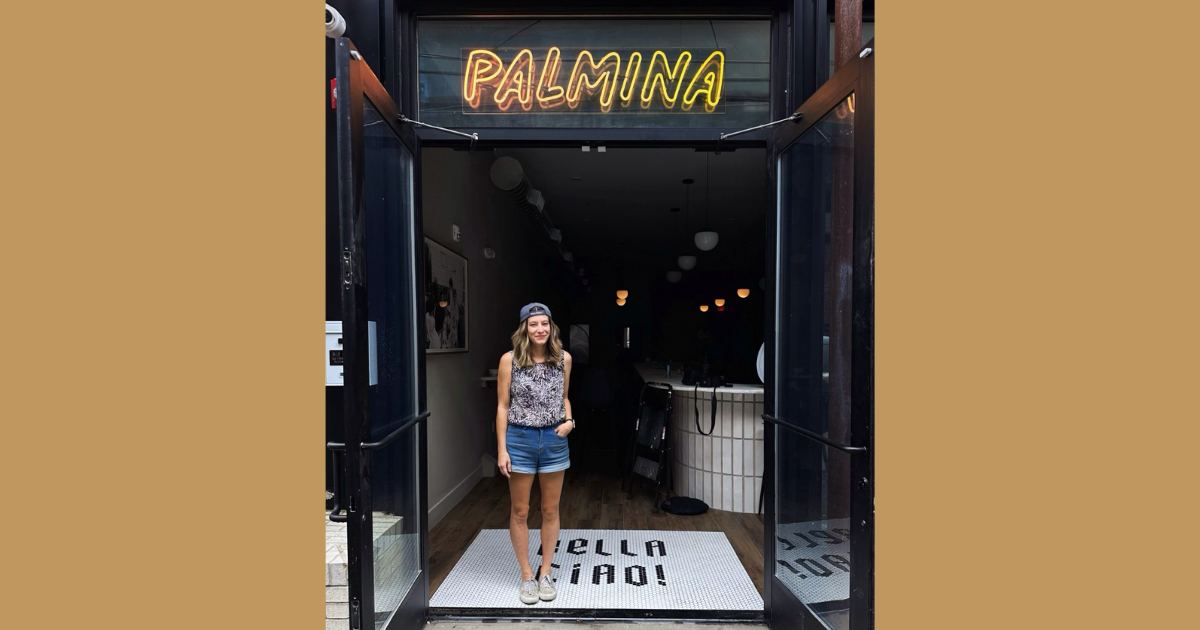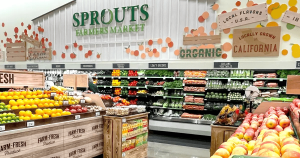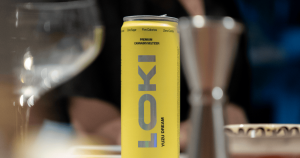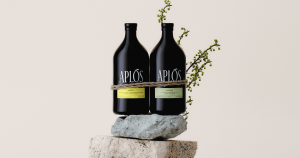Photo credit: Jill Guyette
By Nikki Graziano, Founder of Palmina
In 2022, I nearly drank myself to death at the age of 33. I survived thanks to a liver transplant, then spent weeks in the ICU and months learning how to walk again—and even longer learning how to live again. One year later, I wanted to go out with my partner to mark the milestone of one year sober. I was making decent non-alcoholic drinks at home, so I thought surely someone with more experience had already capitalized on the opportunity to open a non-alcoholic bar. But in Philadelphia, the sixth-largest city in the US, I couldn’t find a single one.
So, I started my own. We operated as a small pop-up for three months and served upwards of 200 customers. Today, we’re one electrical hook-up, a few plumbing lines, and some final inspections away from opening the doors to our first permanent location in the heart of Fishtown, a neighborhood known for its vibrant nightlife.
Non-alc hurdles in an alcohol-controlled state
In the US, there are eighteen alcohol-controlled states, meaning the state is both the distributor and retailer of liquor products. From the National Alcohol Beverage Control Association, “Control jurisdictions represent approximately 24.7% of the nation’s population and account for roughly 23.0% of distilled spirit sales and a significantly smaller percentage of beer and wine sales.”
Why am I talking about liquor distribution in a non-alc publication? In Philadelphia, liquor products are distributed by the Pennsylvania Liquor Control Board (PLCB), whose mission is to “responsibly sell wine and spirits as a retailer and wholesaler, regulate Pennsylvania’s alcohol industry, promote alcohol education and social responsibility, and maximize financial returns for the benefit of all Pennsylvanians.” I repeat, the PLCB is the only distributor of liquor products in the state, and as the non-alc industry expands, liquor brands are getting into the space.
This affects exclusively non-alc retailers, like me, looking to stock my bar with products from both indy non-alc brands and liquor brands that offer non-alc products. While I can buy directly from the indy brands, the liquor brands direct me to their distributor, who directs me to Pennsylvania’s exclusive distributor, the PLCB, who does not sell non-alcoholic products.
How can we get these products on shelves?
I personally see both the good and bad in traditional liquor brands expanding into non-alc, and I’m a) painting with a very broad brush here, and b) not here to write about that. Liquor brands getting into the non-alc industry is great for many reasons. Better equipment, for one. Better access to quality non-alc products for everyone, another. But if there’s a communication breakdown between brand and retailer, how will we even get these products on the shelves, in our bars, and to sober-curious (or just plain sober) people in the first place?
I’ve cold-messaged big-brand sales reps on LinkedIn. I’ve reached out to beverage distributors and been told that tonic water is sold at the PLCB stores with the rest of the mixers, sweetie. I’ve navigated clunky Facebook discussions. I’ve chased brands asking questions until I’m ignored. I’m left without answers and unsure of who to even be frustrated with.
I know the destruction that comes from addiction firsthand, both personally and through operating in Kensington, Philadelphia, the epicenter of addiction in Pennsylvania. Ultimately, I come back to the PLCB’s mission. Social responsibility. Alcohol education. Maximizing profits for all Pennsylvanians. I’m running a locally-owned business founded in recovery, with a social responsibility to provide alcohol alternatives to those who want them. And how is the PLCB maximizing profit by ignoring the revenue that would come with thriving non-alcoholic businesses across the state?
Looking ahead
A year into my hard-earned sobriety, I couldn’t find a place to celebrate. And no wonder. The roadblocks to opening a business like mine are many, but it’s necessary to find a way through to nurture a growing industry that’s changing lives. It changed mine.
Here’s what I know: I don’t have the answers here. I’d like to see these large brands find a way to distribute directly to retailers via marketplaces like Airgoods. I realize this is probably easier said than done, but what about that roughly 24% of the market in controlled states? Does my business plan now involve becoming a distributor? Is that something I can even do? Right now, my solution is to write this piece and start the discussion. It’s not lost on me that change takes time, and I can only hope that this reaches someone with the right knowledge, resources, and capacity for that change.
About the author
Nikki Graziano is the founder and owner of zero-proof cocktail bar Palmina in Philadelphia, PA. She is an artist, dog mom, mouthy Sounders FC supporter, and all-around tinkerer. Follow her on Instagram @barpalmina.






